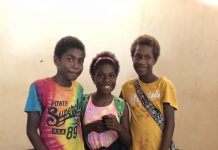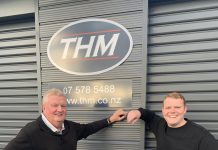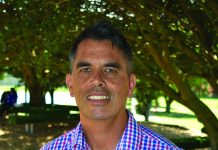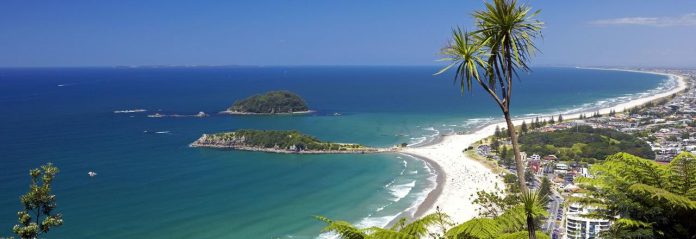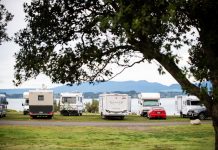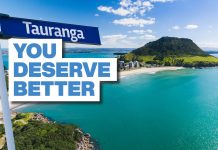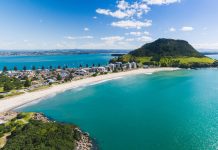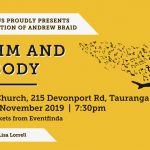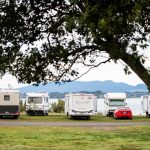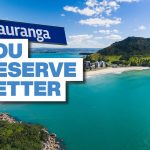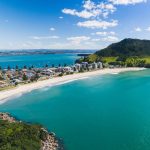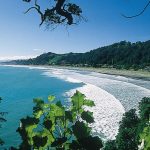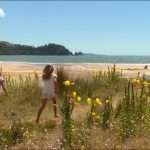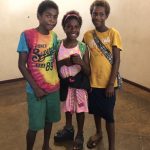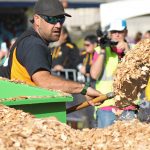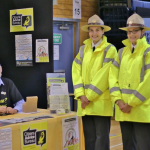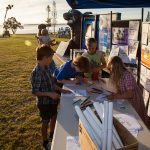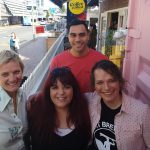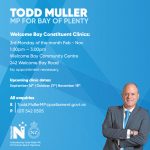Recently, Regional Councillors signed off our Annual Report for the 2016/2017 financial year. As it is a constant frustration to me that many people do not understand what the Regional Council does, I thought it would be worthwhile to outline some highlights from the report which give an indication of the range and depth of our activities.
The Regional Council continued to expand its monitoring, science and data collection capability for environmental reporting to support good decision making. Our monitoring network includes 160 automated monitoring stations covering a wide range of environmental parameters, over 120 sites for monitoring of water quality, and 53 coastal beach profiles surveyed to identify coastal erosion and accretion. Monitoring led to over 1,000 physical flow measurements in rivers and streams, 9,600 laboratory samples accepted, with over 65,100 tests performed on those samples.
In Tauranga Harbour catchment this told us that water quality monitoring sites in streams and rivers were generally very good for nitrate, ammonia, and secondary contact recreation but not so good for primary contact recreation. Stream and marine swimming monitoring sites were generally safe to swim in most of the time, except the Kaiate and Uretara Streams which were poor. River and stream health is variable across the catchments and overall estuarine health continues to be under pressure from a range of stressors, particularly sediment and nutrients.
Strong progress to address this was seen across the five catchments in the region and more than 124 additional kilometres of waterway margin were protected from stock – of this, 50km was in the Tauranga Harbour catchment. Nine agreements are in place with Tauranga City and Western Bay Councils to restore important esplanade reserves and harbour margins across the Tauranga Harbour. 27 new management plans were negotiated with landowners during the year to manage sediments, nutrients and bacteria resulting in 149 management plans in place to improve the health of Tauranga catchments’ land and water.
Biodiversity was actively managed at 72 high value ecological sites and 116 other ecological sites – of these 49 are in the Tauranga Harbour catchment. 42,767 coastal plants were planted during the Coast Care season in the Tauranga Catchment – taking 7,750 hours of planting. 2,235 tonnes of sea lettuce were removed, all from the Fergusson Park to Kulim Park area.
In the Western Bay, 32 registered care groups were actively supported, an increase from 28 last year. The Environmental Enhancement Fund (EEF) was also administered with 18 successful applications and $307,000 in funding allocated.
Work on the Kaituna River Re-diversion and Ongatoro/Maketū Estuary Enhancement Project progressed. This work included the acquisition of 45 hectares of land; removal of the Papahikahawai Creek causeway and a bridge built; and detailed design and geotechnical investigations. Land was also purchased for addition to the Papamoa Regional Park to provide better carparking and scope for visitor facilities such as tracks and viewing areas.
Our Pollution Prevention team received over 2,740 complaints via the Pollution Hotline, an increase of 16 percent on the previous year. Council inspected and assessed resource consent compliance, carrying out 1,900 compliance inspections relating to 1,350 individual resource consents. Seventy-seven percent of consents inspected were fully compliant with consent conditions.
Within the Tauranga Harbour catchment, stormwater pollution prevention audits were undertaken in the Mount Maunganui industrial catchment. Over 350 sites were assessed with 150 sites formally audited. Of these, 69 sites were given recommendations that required follow-up. 17 oil spill incidents were responded to and intensive marina surveillance was carried out within the harbour. Over 11,500 vessel hulls, 100 km of pontoons, 560 swing moorings and 2,500 wharf/marina piles were checked for marine pest incursions.
The Regional Council also continued to support the development, implementation and marketing of contracted passenger transport services and regional road safety campaigns during 2016/17. Bus services were provided for Tauranga, Rotorua, and rural areas with over 3.1 million passengers boarding the services. Additional public transport services were trialled between Te Puke, Paengaroa and Maketū; Waihī Beach and Katikati; and Ruatāhuna and Murupara. Tauranga public transport services are currently under review through the development of the Western Bay of Plenty Public Transport Blueprint.
Council continued its role in leading and facilitating economic development in the Bay of Plenty, through the Bay of Connections portfolio. Implementation strategies are ongoing for Energy, Aquaculture, Forestry, Freight Logistics, Māori, and Rugby Sevens.
Our regional planning activity progressed a number of key planning documents and delivered a steady stream of policy work during 2016/17. This included policy on natural hazards, pest management, water quality, nutrient management in the Rotorua catchment, and the Regional Air Plan.
This summary hasn’t even touched on the work the Regional Council does in civil defence, engineering, river schemes and flood protection, and supporting co-governance entities. I hope though, I have been able to help you understand the Regional Council’s contribution to our place.
If you would like more information on the regional council or any other issue, contact me on neesj@xtra.co.nz or ring me on 07 579-5150.






